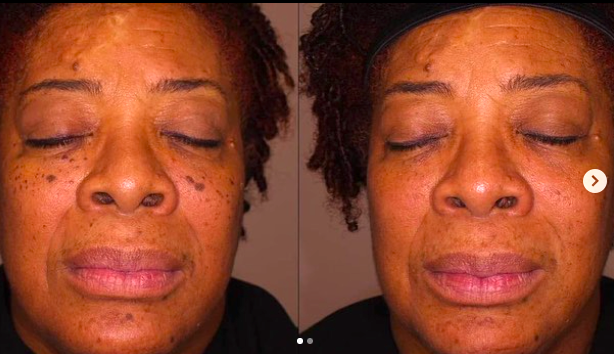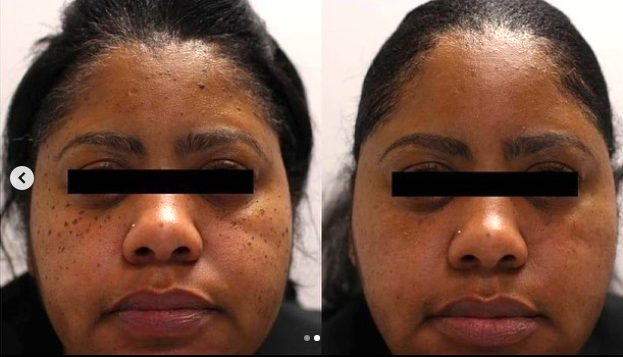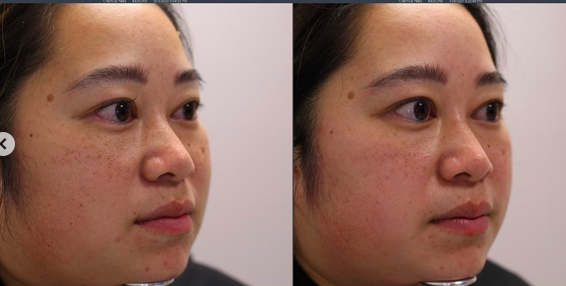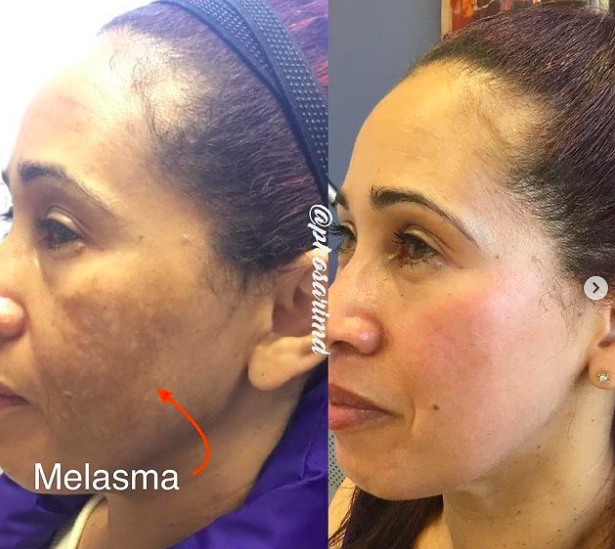When it comes to skin, patients with darker skin tones often have a different set of cosmetic concerns than their lighter-skinned counterparts, as the presence of more natural skin pigment, melanin, can change both the issues and treatments that can be safely used.
It’s important to choose a dermatologist who is experienced in working with patients with skin of color.
We sat down with 3 board-certified dermatologists at DLVSC to hear more about the most common cosmetic concerns in their skin of color patients.
Dermatosis Papulosa Nigra (DPN)
This very common skin condition is characterized by small skin growths, ranging from brown to black in color, that appear on the face and neck. They’re typically painless, but can sometimes can get itchy or become irritated by clothing rubbing against them.
More common in patients of African or Asian descent, these growths can begin developing as early as the teenage years.
“Studies vary, but it has been estimated that one-third of African American adults in the United States have DPNS,” says Dr. Hayley Leight. “The cause is unknown but there is certainly a strong genetic predisposition, with a possible role for UV light in the development of these growths.”
Some patients only have a few of these growths, but others have innumerable lesions, Dr. Leight says.
Whatever you do, don’t try to treat them at home.
“Given the high risk of hyperpigmentation or hypopigmentation and potential risk of scarring with any destructive procedures, we highly recommend against any at-home treatment options,” Dr. Leight says. “I recommend seeing a board-certified dermatologist who is familiar with both the procedure and with treating darker skin types to maximize your results and minimize any potential complications.”

Treatment options
There are many treatment options for DPNs including light electrodessication (drying with a needle), light cryotherapy (freezing), snipping with surgical scissors and curretage (scraping).
Dr. Leight said her personal treatment of choice is the long pulsed 532 nm laser (KTP) that treats the affected area quickly and precisely. There are some risks involved, including hyperpigmentation and scarring, but there are ways to mitigate the risks, such as using lightening creams with hydroquinone at the same time as treatment.
What to expect
Dr. Leight says the laser treatments are minimally painful — patients are typically numbed with topical lidocaine for about 30 minutes in the office prior to a 15-to-30-minute treatment time.
Depending on the areas to be treated and number of growths, most patients will have two or three treatment sessions about four to six weeks apart.

Photoaging
Photoaging, the obvious aging of skin caused by UV exposure from sunlight, is also known as sun damage. And it happens to everyone regardless of skin tone.
“It is a misconception that photoaging does not happen in skin of color,” says Dr. Gilly Munavalli. “It typically begins to present itself in the skin during the mid-to-late 30s and beyond.”
Signs of photoaging include darker spots, wrinkles, broken capillaries, and uneven skin texture.

Treatment options
The best treatment for photoaging is early prevention. Dr. Munavalli recommends diligent sun protection including daily SPF, wide-brimmed hats, and other physical blockers.
To treat skin that’s already showing signs of photoaging, Dr. Munavalli and his team use laser treatments to gently treat skin, improving tone and texture.
“The treatment of photoaging in skin of color requires a high level of expertise with energy-based devices to achieve results and minimize complications,” Dr. Munavalli says. “I typically use a combination of lasers over a treatment course to get the best results possible. All of our physicians at DLVSC have specialized training and familiarity with laser use in patients with darker skin tones and are happy to see you for a consult in the office.”
Laser Hair Removal
There’s a longstanding misconception that people with darker skin tones can’t get laser hair removal because it’s dangerous due to the increased melanin content in their skin.
“This is misinformation,” Dr. Leight says. “Modern devices employ effective cooling and laser wavelengths to minimize these risks. Patients with darker skin tones area absolutely still considered as candidates for laser hair treatments.”
Lasers used for laser hair removal target the pigment-producing cells in the hair follicle. Dr. Leight says the laser must be able to determine the difference between the hair follicle pigment cells and the pigment cells within the skin itself to see a reduction of hair without any unwanted changes to the color of the skin.
She says the safest laser hair removal device for any patient with skin of color is called a neodymium-doped yttrium aluminum garnet (or Nd:YAG) laser. During treatment, light pulses target the hair follicle, which causes the hair to fall out and minimizes further growth.
“I also recommend doing test spots with the laser prior to full treatments with anyone skin type III – VI to ensure the skin reacts appropriately to the laser energy,” Dr. Leight says.
“Patients love laser hair removal,” Dr. Leight says. “Not only does it save them time in the shower, but it also can help with ingrown hairs, and folliculitis — both of which can often lead to hyperpigmentation on the skin that can prove challenging to treat.”
Dr. Leight says laser hair removal is very personalized to the individual depending on what areas are being treated, the color, caliber and density of the hair in the treatment area. It will take multiple treatment sessions initially and maintenance sessions after your initial treatments in most cases.
Hyperpigmentation
If you’re seeing more dark spots than usual, it could be hyperpigmentation. This discoloration of the skin can be caused by everything from sun to trauma to medications and more.
“Hyperpigmentation is very common in patients with skin of color. The majority of patients with darker skin tones will likely experience some form of hyperpigmentation at some point in their lifetime,” says Dr. Payman Kosari. “The cells in our skin that are responsible for hyperpigmentation are the same cells responsible for skin color, which means we are susceptible to hyperpigmentation at any time in our lifetime.”

Dr. Kosari says although any part of our skin is at risk of hyperpigmentation, it’s most common in sites of trauma or inflammation on the face, chest and back.
Treatment options
“We have had a breakthrough in treatments for hyperpigmentation,” Dr. Kosari says. “I love using a combination of prescription-based topical brightening agents, chemical peels, and energy-based devices.”
Dr. Kosari also recommends a relatively new oral medication called tranexamic acid, an acid that blocks the enzyme responsible for pigmentation.
At home, Dr. Kosari recommends a good preventative skincare routine including sunscreen, brightening agents such as glycolic or azeleic acid as well as lower strength hydroquinone.
However, he does not recommend doing at-home chemical peels given the risk of potentially worsening the condition.
Those higher intensity treatments are best left to a professional.
